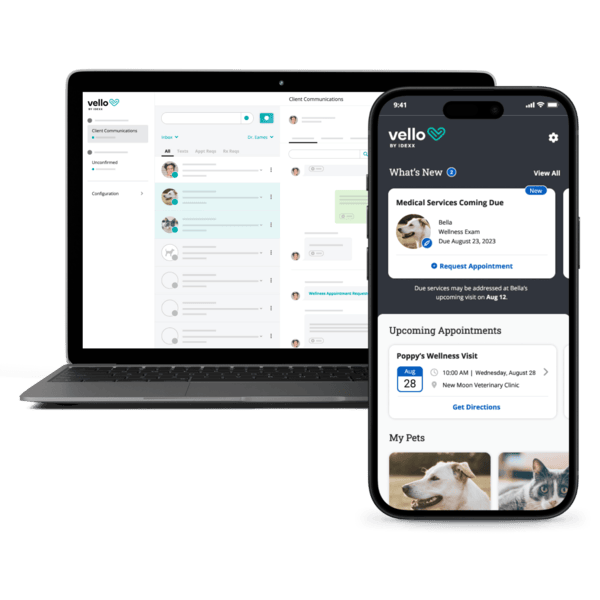How to Improve Veterinary Client Retention Through Better Communication

Pet owners want to feel heard and supported by the team caring for their beloved pets’ well-being. How your veterinary practice connects with clients, from the first phone call to ongoing healthcare communications, can impact client satisfaction and long-term loyalty.
If your client retention rate is slipping, improving communication could help. Here are eight best practices for veterinary communication to attract new clients and keep existing clients returning for exceptional veterinary care.
1. Make a good first impression
The client relationship begins when a pet owner first contacts your veterinary clinic. A warm yet professional greeting can set a positive tone. Front desk team members are often clients’ first impression of the practice, so they should treat pet owners with empathy and compassion. Select front desk staff members who are comfortable interacting with strangers and provide training to help them provide the best service.
2. Personalize client interactions
Personalized communication shows clients that you care. Using a pet’s name on reminders, during check-ins, and when speaking to the pet owner demonstrates thoughtfulness and builds trust. Whether the interaction concerns a wellness check-up, post-visit follow-up, or a refill reminder, small and intentional efforts can add up to a stronger relationship and better veterinary client retention.
3. Use technology
Veterinary professionals experience time crunches daily. Fortunately, modern technology can help your practice maintain consistent communication without overwhelming individual team members. Essential technology for boosting communication and veterinary client retention include:
- Cloud-based practice management software
- Email and text message capabilities
- Automated appointment reminders
- Telemedicine
- Client-facing mobile app
- Online booking
- Digital pet health records access
4. Empower clients with education
Client education is foundational to veterinary care. When pet parents understand their pet’s health conditions and the “why” behind a recommendation or treatment plan, they’re more likely to commit to ongoing veterinary care. If you don’t proactively educate your clients, they’ll get information elsewhere—possibly from unreliable sources. Use multiple platforms, including email newsletters, social media posts, blog posts, handouts, website links, and in-clinic visual aids to keep clients informed.
5. Communicate with consistency
Clients who have consistently positive experiences at your hospital will learn to trust your team, but inconsistencies can have the opposite effect. For example, always returning phone calls within 24 hours shows your commitment to pet health, while dropping the ball and failing to return a call can damage a relationship. Automated text messages, reminders, and emails can help prevent details from slipping through the cracks, as can digital client communication platforms that organize messages and requests on each employee’s PIMS dashboard.
6. Tackle tough topics
Some topics stir strong emotions in pet owners, but a direct and compassionate approach can make these difficult conversations a bit easier. Effective communication is essential during discussions about serious diagnoses, pricing and payment options, poor health outcomes, or end-of-life pet care. Train veterinary team members to display empathy and employ active listening to give clients space to process negative emotions. Navigating complex client interactions with grace will improve trust and veterinary client retention, even during difficult times.
7. Stay connected with social media
Social media is a great way to connect with existing and new clients. Sharing animal health tips, interesting cases, or lighthearted team updates helps pet owners feel like part of a community rather than a transactional relationship. Encouraging social media viewers to comment, like, or share posts and regularly interacting with posts yourself builds relationships and encourages clients to return.
8. Ask for feedback
Sometimes, the most powerful communication strategy is listening. Actively solicit client feedback via email surveys or post-visit text links, and then show pet owners your gratitude by acting on that feedback to improve the client experience. Clients who feel their opinions matter and see the clinic’s commitment to ongoing improvements will stick with your practice and might refer others, too.
Employing these veterinary client communication best practices is key to better client retention. Use cloud-based veterinary software to update communication technologies, train team members to provide consistent, compassionate, and empathetic interactions, and educate clients across multiple channels to establish a healthy veterinarian-client-patient relationship and keep pet parents coming back.
Want more content like this?
Sign up for The Connected Practice Newsletter




